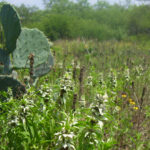Nitrogen is one of the most essential nutrients for plant growth, playing a crucial role in everything from leaf development to chlorophyll production. It’s a key component of fertilizers, helping your plants thrive and reach their full potential. But what exactly does nitrogen do, and where can you find it? Let’s dive in!
The Benefits of Nitrogen for Plants
Nitrogen is a powerhouse nutrient for plants, offering a range of benefits:
- Promotes lush growth: Nitrogen is a major component of chlorophyll, the compound that makes plants green and captures sunlight for photosynthesis. Adequate nitrogen levels result in vibrant, healthy foliage.
- Boosts protein production: Nitrogen is essential for the formation of amino acids, the building blocks of proteins. Proteins are vital for plant growth, development, and reproduction.
- Enhances yields: By supporting overall plant health and vigor, nitrogen contributes to increased crop yields and flower production.
Organic Sources of Nitrogen
While synthetic nitrogen fertilizers are readily available, organic sources offer a more sustainable and environmentally friendly approach. Here are some excellent options:
- Compost: This “black gold” of the garden is a fantastic source of nitrogen and other essential nutrients. It also improves soil structure and water retention.
- Manure: Animal manure, such as cow or chicken manure, is rich in nitrogen. However, it’s important to use aged or composted manure to avoid burning plants.
- Legumes: Plants in the legume family, like beans and peas, have a symbiotic relationship with nitrogen-fixing bacteria in their roots. These plants can add nitrogen to the soil naturally.
- Green manure: This involves growing a crop specifically to be tilled back into the soil, adding organic matter and nitrogen. Cover crops like clover or rye are popular choices.
- Blood meal and feather meal: These are byproducts of animal processing that are high in nitrogen. They are typically used as soil amendments or mixed into compost.
Tips for Using Nitrogen Effectively
- Test your soil: Before applying any nitrogen fertilizer, it’s crucial to know your soil’s nutrient levels. A soil test can help you determine how much nitrogen is needed.
- Apply nitrogen at the right time: Plants need the most nitrogen during their active growth phase. Applying nitrogen at the appropriate time ensures that it’s readily available when needed.
- Avoid over-fertilizing: Too much nitrogen can be harmful to plants and the environment. It can lead to excessive growth, nutrient runoff, and pollution of waterways.
- Use slow-release fertilizers: Slow-release fertilizers provide a steady supply of nitrogen over time, reducing the risk of nutrient loss and environmental impact.
Nitrogen is a critical nutrient for plant growth, and understanding its role can help you create a thriving garden. Whether you choose synthetic or organic sources, using nitrogen responsibly is key to maximizing its benefits while minimizing any potential harm to the environment.
Remember, a healthy garden starts with healthy soil. By incorporating organic matter, testing your soil, and using nitrogen judiciously, you can ensure your plants have the nutrients they need to flourish.




